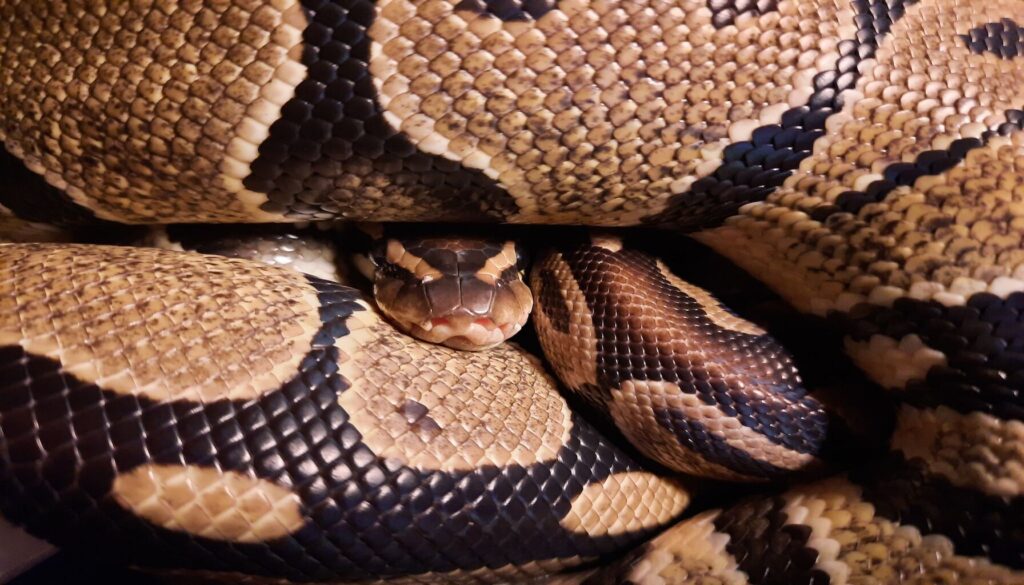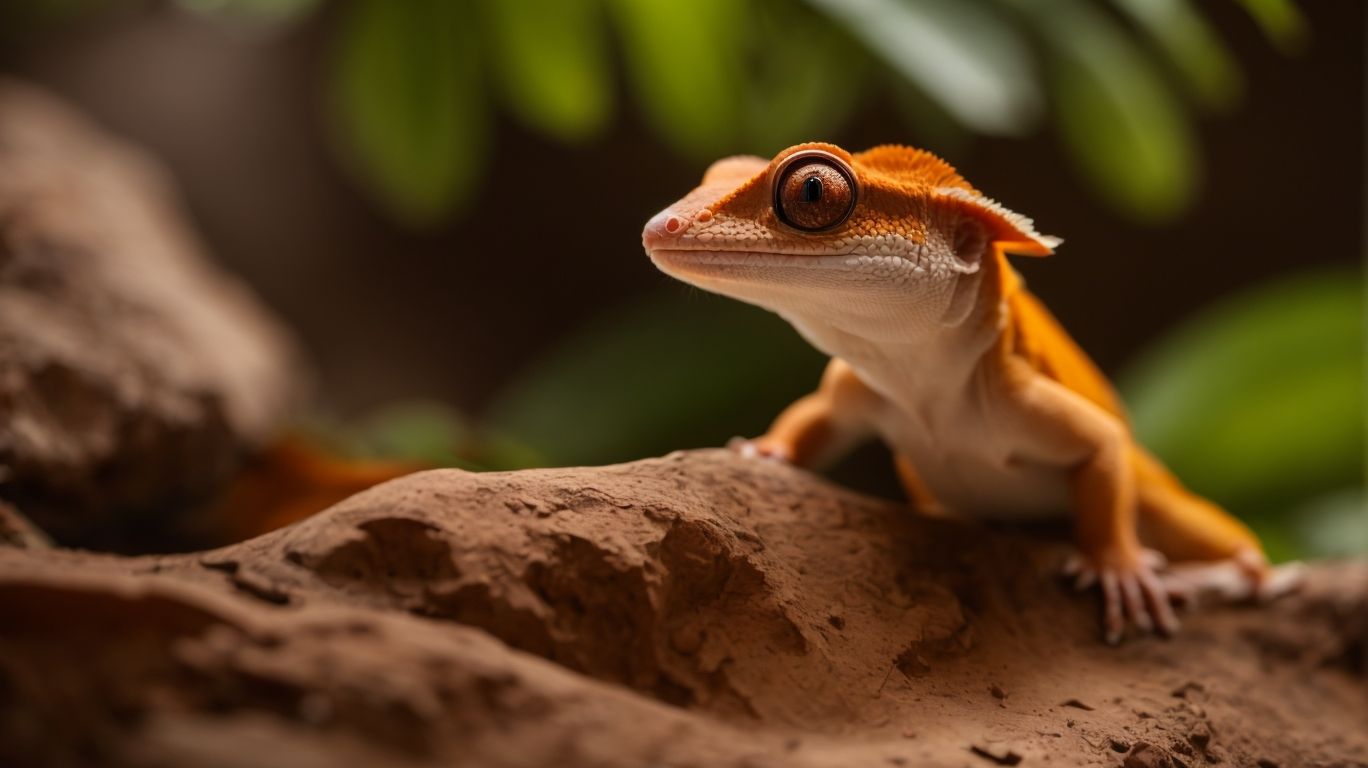
From the Wild to Your Home: A Comprehensive Overview of Ball Pythons
Table of Contents
The Wild Origins of Ball Pythons
Ball pythons, scientifically known as Python regius, are native to the grasslands and savannas of sub-Saharan Africa. They can be found in countries such as Ghana, Togo, Benin, Nigeria, and Cameroon. These regions provide the ideal climate for ball pythons, with temperatures ranging from 75 to 85 degrees Fahrenheit and relative humidity around 50-60%.
In the wild, ball pythons are primarily nocturnal, spending their days hidden in burrows or under rocks, emerging at night to hunt for food. They have a varied diet that includes small mammals, birds, and reptiles. With their incredible camouflage and stealthy hunting skills, ball pythons are formidable predators.
One interesting aspect of their natural habitat is their ability to survive in both dry and wet seasons. During the dry season, when water sources may be scarce, ball pythons conserve their energy by going into a state of brumation, a reptilian form of hibernation. They seek out cool and dark places, reducing their metabolic rate and conserving water.
Despite their wild origins, ball pythons have successfully adapted to captivity and make excellent pets for reptile enthusiasts. But it is important to remember that even though they are bred in captivity, they still retain many of their natural instincts and behaviors.
Why Ball Pythons Make Excellent Pets
If you’re considering getting a pet, a ball python might just be the perfect choice for you. These incredible creatures have so many qualities that make them excellent pets. Let’s dive into why ball pythons are such great companions.
First and foremost, ball pythons are known for their calm and gentle temperament. Unlike some other reptiles, they are not aggressive and rarely show signs of aggression. This makes them safe and easy to handle, even for beginners. Ball pythons are generally docile and enjoy being handled, making them a great choice for those looking for a pet that they can interact with.
Another reason why ball pythons make excellent pets is their manageable size. While they can grow up to 4-5 feet in length, they are not as large or intimidating as some other snake species. This makes them easier to house and care for, especially if you have limited space in your home.
In addition to their temperament and size, ball pythons are also relatively low-maintenance pets. They have a slow metabolism, so they only need to be fed every 1-2 weeks, depending on their age and size. They also have simple habitat requirements, needing a secure enclosure with proper heating and humidity levels. This makes them a great choice for busy individuals or families who may not have the time or resources for a higher-maintenance pet.
Life Cycle and Development of Ball Pythons
Understanding the life cycle and development of ball pythons is crucial for providing them with the best care possible. These magnificent creatures go through several stages in their journey from hatchling to adulthood.
The life cycle of a ball python begins when a female lays her eggs. She typically lays between 3 to 11 eggs, which she will carefully incubate for about 60 to 80 days. The temperature during incubation plays a significant role in determining the sex of the hatchlings. Warmer temperatures tend to produce females, while cooler temperatures result in males.
Once the eggs hatch, the baby ball pythons, also known as hatchlings, emerge. At this stage, they are about 10 to 16 inches long and incredibly adorable. These tiny replicas of their parents are usually independent from the moment they hatch. However, it is essential to provide them with a proper enclosure and appropriate temperatures to ensure their well-being.
As the hatchlings grow, they will shed their skin periodically. This shedding process allows them to grow and get rid of any parasites or damaged skin. Young ball pythons may shed every 2 to 4 weeks, while adults shed less frequently, around every 4 to 6 weeks.
Throughout their development, ball pythons will continue to grow and mature. It takes several years for them to reach their full adult size, which can range from 3 to 5 feet in length. With proper care, nutrition, and environmental conditions, ball pythons can live up to 30 years in captivity.
Unique Features and Adaptations
Ball pythons possess several unique features and adaptations that make them fascinating creatures to study and appreciate. One of their most notable features is their ability to coil themselves into a tight ball when threatened, hence their name. This behavior helps protect their vulnerable head and neck and makes them more difficult for predators to swallow.
Another intriguing adaptation of ball pythons is their ability to regulate their body temperature. Like all reptiles, they are ectothermic, meaning they rely on external sources of heat to regulate their body temperature. Ball pythons have special heat-sensitive pits located on their upper lip called “pit organs.” These pits can detect even the slightest temperature changes in their environment, allowing them to locate warm-blooded prey more effectively.
They also possess a unique hunting strategy known as “ambush predation.” They have a remarkable ability to lie in wait for their prey, perfectly camouflaged and virtually undetectable. When their prey gets close enough, the ball python strikes with incredible speed, coiling its muscular body around the prey and constricting it until it suffocates.
Another interesting adaptation is their ability to stretch their jaws and consume prey much larger than their head. Their lower jaw is loosely attached to the skull, allowing them to unhinge their jaws and stretch them to accommodate large prey. This remarkable adaptation allows them to consume meals that are significantly larger than their own size.
Enrichment and Mental Stimulation
Enrichment and mental stimulation are crucial aspects of providing a fulfilling and healthy life for your ball python. While they may not be as interactive as some other pets, it is still important to provide them with opportunities for mental engagement and stimulation.
One way to provide enrichment for your ball python is through environmental enrichment. This can include providing a variety of hiding spots and climbing opportunities in their enclosure. Ball pythons are known for their love of tight spaces, so adding branches or logs for them to wrap around can provide mental stimulation and mimic their natural habitat.
Another form of enrichment is through the introduction of novel stimuli. This can include introducing new objects or scents into their enclosure, such as leaves, branches, or even a small toy. This can help keep their minds active and prevent boredom. Just be sure to monitor your snake closely when introducing any new objects to ensure their safety.
Physical exercise is also important for ball pythons. While they may not require as much physical activity as other pets, providing opportunities for them to explore their enclosure and move around can contribute to their overall well-being. You can create a secure and supervised play area outside of their enclosure where they can safely explore and stretch their muscles.
Common Misconceptions About Ball Pythons
It’s time to set the record straight and debunk some common misconceptions about ball pythons. These fascinating creatures have unfortunately been the subject of many myths and misunderstandings. Let’s address some of these misconceptions head-on.
First and foremost, many people believe that ball pythons are dangerous or aggressive snakes. This couldn’t be further from the truth. Ball pythons are known for their calm and gentle temperament. They rarely show signs of aggression and are generally docile and easy to handle. Of course, it’s important to handle them with care and respect, but there’s no need to fear them.
Another misconception is that ball pythons require a lot of space. While it’s true that they can grow up to 4-5 feet in length, they are not as large or intimidating as some other snake species. In fact, their manageable size makes them easier to house and care for, especially if you have limited space in your home. As long as they have a secure enclosure that meets their needs, they can thrive in a variety of living situations.
There is also a belief that ball pythons are difficult to feed and require live prey. This is simply not true. Ball pythons are generally easy to feed and can be fed frozen-thawed rodents, which are readily available and safe for them to consume. Feeding them frozen-thawed prey also eliminates the risk of injury to either the snake or the prey.
Lastly, some people believe that ball pythons are high-maintenance pets that require a lot of time and attention. While it’s true that they do have specific care requirements, they are relatively low-maintenance compared to other pets. They have a slow metabolism and only need to be fed every 1-2 weeks, depending on their age and size. Their habitat requirements are also relatively simple, with proper heating and humidity being the key factors. As long as their basic needs are met, they can thrive with minimal fuss.
The Joy of Ball Python Ownership
Owning a ball python is a truly rewarding experience that brings joy and companionship into your life. These beautiful creatures make excellent pets, and there are so many reasons why they are a wonderful addition to any home.
One of the greatest joys of ball python ownership is their calm and gentle temperament. Unlike some other reptiles, they are not aggressive and rarely show signs of aggression. This makes them safe and easy to handle, even for beginners. The bond that you can develop with your ball python is truly special, as they enjoy being handled and interacting with their owners.
Additionally, the low-maintenance care requirements of ball pythons make them a great choice for busy individuals or families. They have a slow metabolism and only need to be fed every 1-2 weeks, depending on their age and size. They also have simple habitat requirements, needing a secure enclosure with proper heating and humidity levels. This means that you can enjoy the companionship of a ball python without the need for constant attention or upkeep.
In conclusion, the ball python’s distinct qualities and easy upkeep make it an excellent choice for anyone seeking a unique, low-maintenance pet. They not only add a unique flair to your home but also enrich your life with their peaceful presence.
Related Posts

Incubating Crested Gecko Eggs: Essential Techniques and Tips
Crested geckos are fascinating reptiles that are known for their…

Red Crested Gecko Health: Common Issues and Preventive Care
Are you a proud owner of a red crested gecko?…

Creating the Ideal Environment for Your Red Crested Gecko
Do you own a red crested gecko or are you…

No Comments